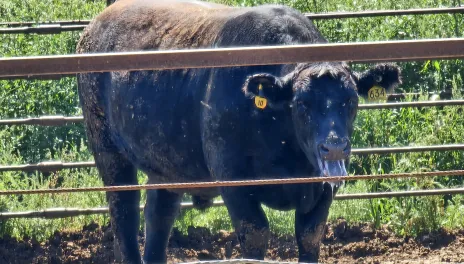Concrete or dirt feedlot pens: keeping cattle comfortable in the summer
To build on last week’s Center Points, mud can be tough on animals.
One method of limiting mud is to pour concrete. Though expensive, concrete pen surfaces can limit mud issues, decrease needed bedding, and ease cleaning throughout the year. But are we putting deleterious effects on cattle with that management decision?
Prior to my hire date in 2021, I was deployed on my second trip to the Middle East. During cool nights in the Levant, many phone calls were made back home while laying on those warm T-walls. Once I came to Carrington I thought maybe those fat steers had to lay around on hot concrete while others sprawled out on cool clay.
From June to October of 2023, we tracked the movement intensity of 24 steers with accelerometer ear tags. Additionally, we logged pen surface temperatures using Ibutton temperature loggers. The objective of this study was to determine if temperature differences in pen types (concrete vs. dirt) influenced cattle behavior, growth performance, and carcass characteristics. We focused our investigation on the time period from 6:00 p.m. to 9:00 p.m. to see, as daytime temperatures and solar radiation started to decline, if pen temperature and activity levels deviate from one another.
When all was said and done, we did not detect any activity differences between steers in concrete pens and steers in dirt pens. During the time period, cattle in concrete pens were active on average 17.5 minutes while cattle in dirt pens were active 19.9 minutes. Additionally, no differences in pen surface temperature were detected between concrete and dirt pens. From 6:00 p.m. to 9:00 p.m. throughout the entire feeding period, concrete pens were 62.25℉ and dirt pens were 62℉. Data from this study, and others, is available at the CREC Annual Report (https://www.ndsu.edu/agriculture/ag-hub/publications/carrington-research-extension-center-2024-annual-report).
Though initial costs of concrete are high, keeping cattle out of the mud is beneficial during the chill of the fall and early spring.
Colin Tobin, Ph. D.
Colin.Tobin@ndsu.edu
Research Animal Scientist
